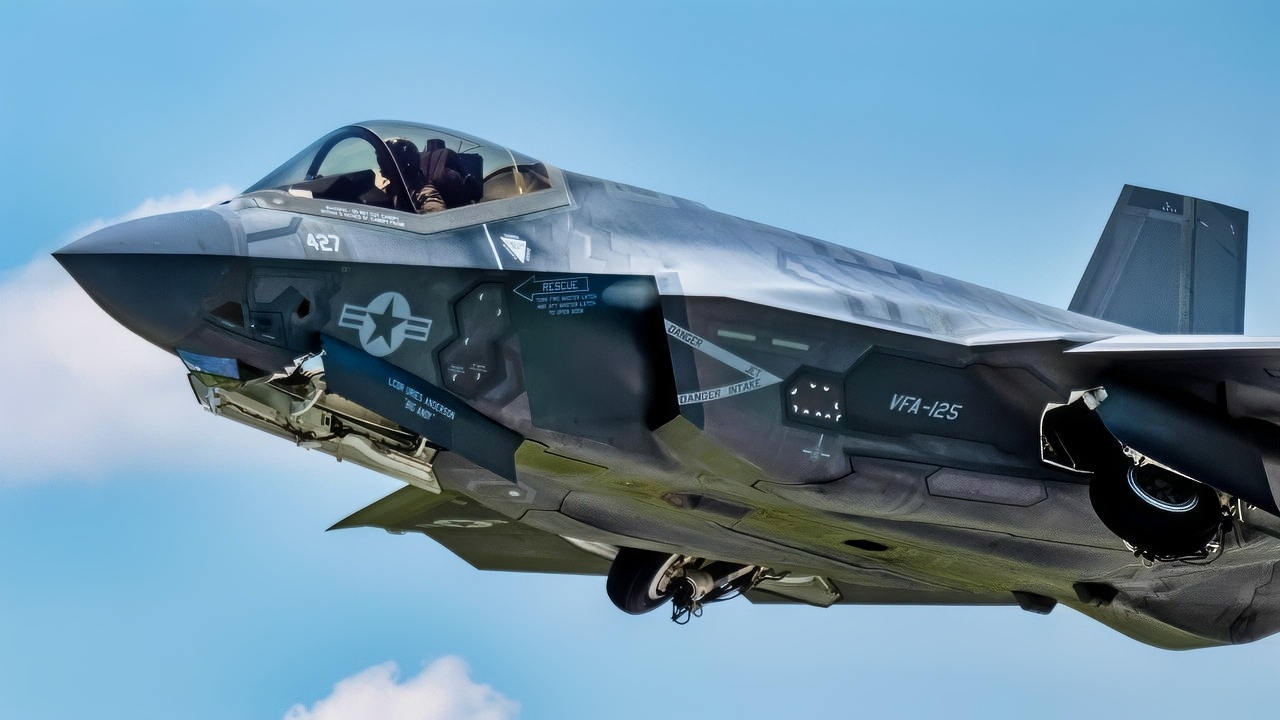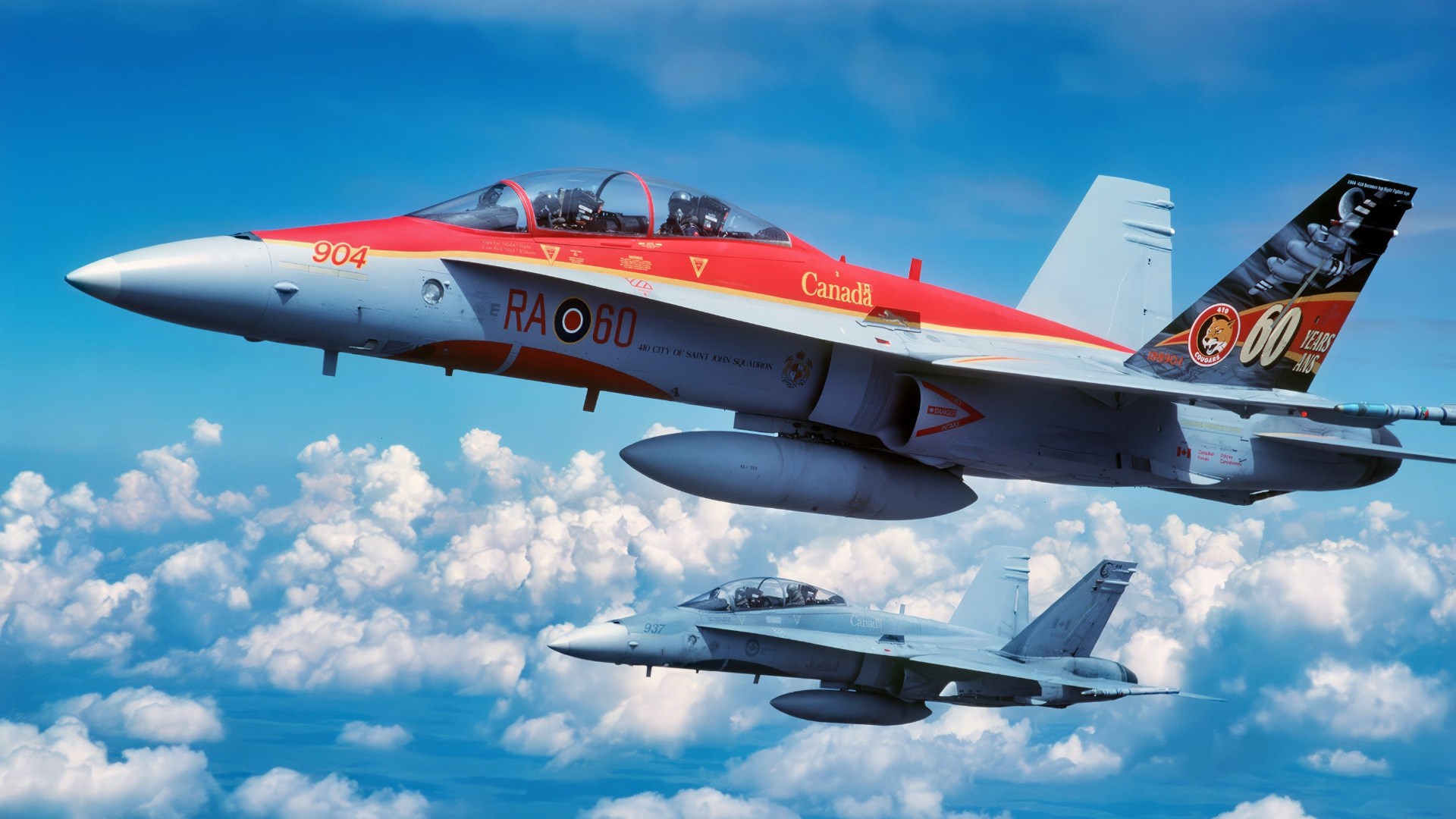Key Points and Summary – Canada’s Air Force is running out of runway. Aging CF-18s are costly to keep flightworthy, readiness is sliding amid pilot and maintainer shortages, and Arctic threats are growing.
-Ottawa’s Future Fighter plan points to 88 F-35As, but sustainment, facilities and training costs are daunting—and only an initial tranche is assured.

JAS 39 Gripen E Fighter. Image Credit: Creative Commons.
-Saab’s Gripen E tempts with lower operating costs, Arctic basing flexibility and promised industrial work.
-The real choice is fleet design and ecosystem: all-in on F-35, pivot to Gripen, or a mixed fleet that balances high-end stealth with affordable mass. Delay risks a capability gap the RCAF can’t afford.
The CF-18 Hornet Needs to Be Retired
The Royal Canadian Air Force has always lived in the shadow of its Southern neighbor. Without the vast defense budget that the U.S. enjoys, Canada’s Air Force has always been significantly smaller and less advanced than America’s.
In the last couple of years, Canada has been attempting to modernize its increasingly aging air fleet.
However, these efforts have been met with delays and controversies. As recruitment numbers drop and the budget grows smaller, the Royal Canadian Air Force is heading towards a calamitous future if essential decisions are not made soon.
Background: What’s Wrong With the RCAF?
For several decades now, the RCAF has maintained a small and robust fleet of CF-18s, which are licensed versions of the F/A-18 Super Hornet.
These aircraft provided Canada with decent capabilities for a time, but now they are starting to show their age, and maintaining them is becoming increasingly costly.

An F/A-18C Hornet, assigned to the “Stingers” of Strike Fighter Squadron 113, transits over the haze of southern Afghanistan. VFA 113, part of Carrier Air Wing 14 aboard the aircraft carrier USS Ronald Reagan is supporting Operation Enduring Freedom. The mission of CVW 14 is to protect the people of Afghanistan and to support coalition forces. Ronald Reagan is currently deployed to the U.S. 5th Fleet area of operations. Operations in the U.S. 5th Fleet area of operations are focused on reassuring regional partners of the United States’ commitment to security, which promotes stability and global prosperity.
With rising tensions worldwide and Russia pushing further into the Arctic, the need for a strong air force is paramount to Canada’s national defense. These problems are further compounded by personnel shortage, which further degraded the FCAF’s ability to maintain its fleet.
To address these issues, Canada launched the Future Fighter Capability Project, which aims to replace the CF-18 fleet with eighty-eight F-35A Lightning II aircraft. The initial contract was signed in 2023, with deliveries scheduled to begin in 2026 and full operational capability expected by the early 2030s.
However, political and economic factors have introduced uncertainty. Ottawa has confirmed the purchase of sixteen F-35s but is reviewing whether to proceed with the whole order, partly due to cost overruns and diplomatic tensions with the United States.
Meanwhile, Saab’s Gripen E has re-emerged as a potential alternative or supplement to the F-35 fleet. The Gripen offers lower operating costs, easier maintenance, and Arctic suitability, making it attractive for Canada’s unique geography and sovereignty requirements.
Why Canada Needs New Fighters
Maintaining the CF-18s until the transition is complete is already a costly uphill battle. The fleet suffers from structural fatigue and requires frequent inspections and repairs.
Spare parts are increasingly difficult to source, and the jets require extensive labor to remain airworthy.
Canada has invested heavily in sustainment, including a CA$211 million contract with Arcfield Canada for avionics and supply chain support, extending the fleet’s life until at least 2032. Despite these efforts, maintenance is expensive and time-consuming.

U.S. Air Force Maj. Kristin “BEO” Wolfe, F-35A Lightning II Demonstration Team pilot and commander, flies an F-35A Lightning II assigned to the 421st Fighter Generation Squadron during Naval Air Station Key West 2023 Southernmost Air Spectacular over Boca Chica Field in Key West, Florida, April 14, 2023. The F-35 demonstrated its capabilities during the airhshow, along with the U.S. Navy Blue Angels and other various performers. (U.S. Air Force photo by Senior Airman Kaitlyn Ergish)
Compounding the problem is a shortage of trained pilots and technicians, which further reduces operational readiness.
Auditor General reports have highlighted that Canada struggles to meet NORAD and NATO commitments because of insufficient aircraft availability and personnel gaps.
Currently, only about forty percent of Canada’s air force inventory is considered serviceable, mainly due to the CF-18’s age and maintenance burden.
This low readiness rate poses strategic risks, especially as Russian and Chinese air activity increases in the Arctic and the Pacific.
The F-35 Fiasco
Transitioning to the F-35 introduces a different set of challenges. The F-35 is a fifth-generation stealth fighter with advanced sensors and networked capabilities, but these features come at a price.
Sustainment costs are incredibly high, and global mission-capable rates have hovered around thirty-six percent. Canada will face similar challenges unless it invests heavily in infrastructure and logistics.
Maintaining F-35s requires specialized facilities, secure data systems, and advanced diagnostic tools. Canada is building a domestic airframe maintenance depot in partnership with L3Harris MAS to keep heavy maintenance work in the country and reduce reliance on U.S. support.

U.S. Navy Lt. Dave Hinkle, F-35C Lightning II Demonstration Pilot, performs during the 2021 Atlanta Air Show, Atlanta Regional Airport-Falcon Field, Ga., May 23, 2021. The U.S. Navy and Marine Corps’ carrier variant has larger wings and more robust landing gear than the other F-35 variants, making it suitable for catapult launches and fly-in arrestments aboard naval aircraft carriers. (U.S. Air Force photo by Staff Sergeant Thomas Barley)
This initiative is crucial for sovereignty but adds complexity and cost.
The F-35 program also demands a robust supply chain for stealth coatings, sensors, and software updates. Canada must invest in pilot training infrastructure, initially using facilities at Luke Air Force Base in Arizona until domestic systems are ready. Without these parallel investments, Canada risks owning a fleet it cannot fully support.
Canada has also shown interest in potentially procuring the JAS 39 Gripen. The JAS 39 can operate from short or improvised runways (a trait not exclusive to the JAS 39, but Saab loves using it as a marketing point), including Arctic road bases, and requires fewer personnel and less specialized infrastructure.
This makes them ideal for dispersed operations in Canada’s vast northern regions. Operating costs are significantly lower than those of the F-35, and Swedish maintenance contracts emphasize high availability.
Saab provides comprehensive support packages that include spare parts, repairs, and training, ensuring readiness without the logistical complexity associated with stealth aircraft. Furthermore, Saab has offered Canada local assembly lines and technology transfer, which could strengthen domestic aerospace capabilities and reduce dependence on foreign suppliers.
The Canadian Air Force Dilemma
Each aircraft has its pluses and minuses, but a decision needs to be made soon on whether Canada goes all in on the F-35 or just the 16 it has already bought.
The CF-18s are aging rapidly, with rising costs and declining availability.
The F-35s, while technologically advanced, impose enormous sustainment burdens and require specialized infrastructure and personnel. The Gripen, by contrast, offers a pragmatic solution with low maintenance demands and high operational flexibility.
For Canada, the ultimate challenge is not just acquiring new jets but also building the ecosystem —think bases, technicians, supply chains, and doctrine—to sustain them effectively.
Maintaining CF-18s until 2032 is a stopgap measure that drains resources and risks capability gaps. The F-35 is essential for NATO interoperability and for operating in advanced threat environments, but its sustainment burden is enormous.

Capt. Andrew “Dojo” Olson, F-35 Demonstration Team pilot and commander performs a high-speed pass during the Melbourne Air and Space Show March 29, 2019 in Melbourne, Fla. The air show featured the North American Debut of the all-new F-35 Demonstration. (U.S. Air Force Photo by Senior Airman Alexander Cook)
Without parallel investments, Canada could end up with a fleet that looks impressive on paper but is challenging to keep mission-ready.
The Gripen presents an alternative that aligns well with Canada’s geography and budget constraints, offering Arctic suitability and cost control.
A mixed fleet could balance high-end stealth capability with affordable, versatile fighters, ensuring Canada meets both sovereignty and alliance obligations.
About the Author: Isaac Seitz
Isaac Seitz, a Defense Columnist, graduated from Patrick Henry College’s Strategic Intelligence and National Security program. He has also studied Russian at Middlebury Language Schools and has worked as an intelligence Analyst in the private sector.
More Military
The ‘Super’ B-52H Stratofortress Bomber Is Already Flying
‘Go Home’: Stealth F-22 Raptor Flew Right Under Iranian F-4 Phantom Undetected
Russia’s ‘New’ PAK DA Stealth Bomber Has a Message for Every Military On Earth
China’s New H-20 Stealth Bomber Has a Message for Any Military on Earth
Mach 2 F-4 Phantom II Fighter Has a Message for Every Air Force on Earth










